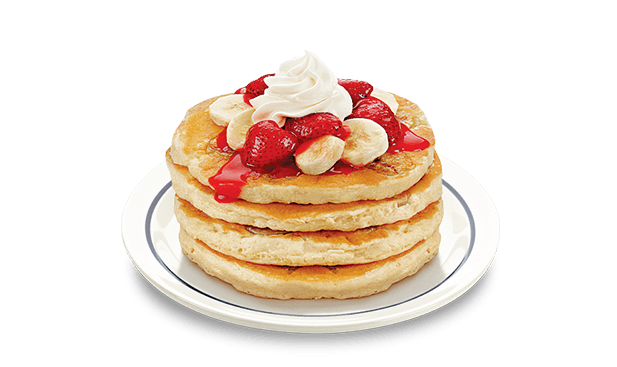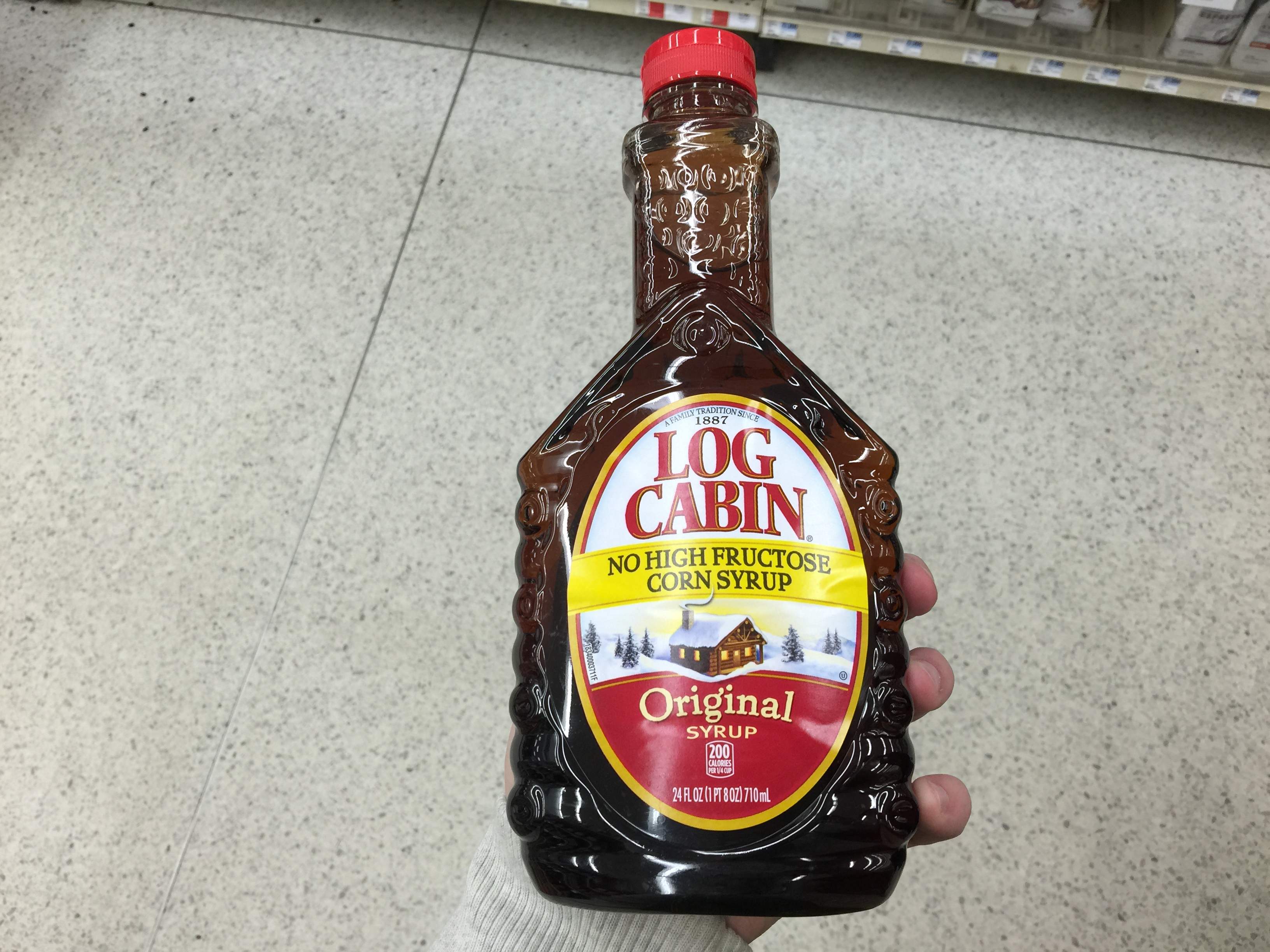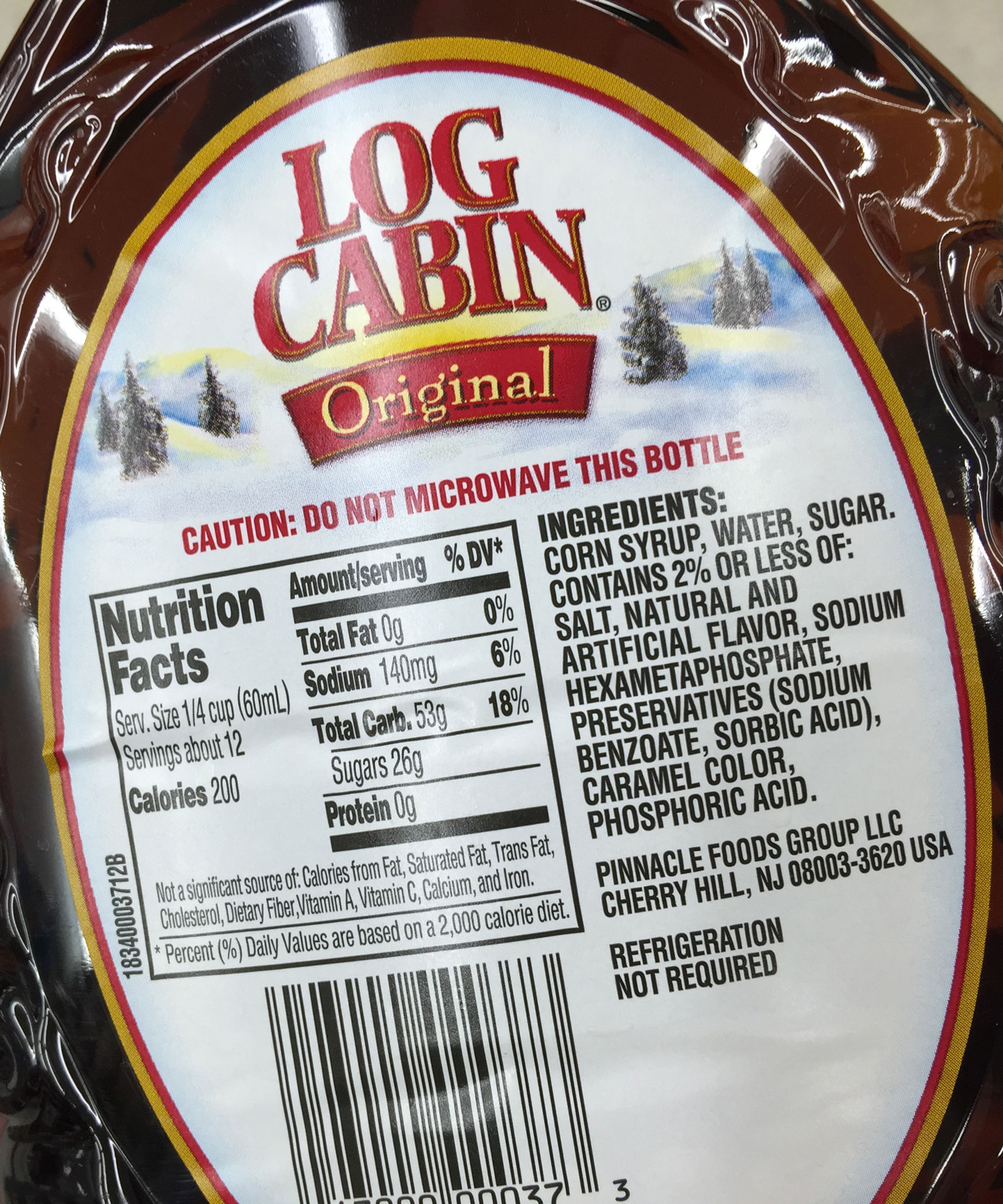You Can Get Free Pancakes If You Go to IHOP Today!
March 3rd, 2015, is the 10th anniversary of National Pancake Day. If you head to an IHOP, you can get free pancakes. They ask, but you are not required, to make a donation to charity in lieu of paying for your meal, with the goal being to raise $3,500,000 this year for Children’s Miracle Network Hospitals.

You might want to consider bringing your own maple syrup, though. As you know, one of the few things in life that irritates me to no end is the (what I consider) stupidity of the pancake industry, which has now, in 2015, nearly completely replaced every single store brand maple syrup with “pancake” syrup instead, which is really dyed corn syrup. In certain areas of the country, especially on the East Coast, the difference is common sense. In Canada, you learn it from birth. Head to a huge part of the Midwest, though, and this trash is called in colloquial conversation “maple syrup” even though it’s not. In some grocery stores, you can’t even find the real stuff. On a recent trip to one of the most affluent grocery stores in the area, I did a count and there was only one type of off-brand real maple syrup available for sale. It was buried among two dozen corn syrup substitutes. Geographically and culturally, there is a huge part of the United States that has no idea there is a difference in the product in the same way most people have no idea the gasoline they are sold in their cars is different in winter and summer or that Rome, Italy is geographically further north than than New York.
I bring it up once or twice a year because I keep hoping it will change. The product adulteration that began as a helpful stop-gap for the lower class, bottom-shelf brands in the Great Depression as a way to make breakfast affordable for families that couldn’t spare a few pennies for real tree sap has now become the de facto standard with the shareholders of the packaged food companies pocketing the difference. Once it was accepted, and consumers didn’t notice, it’s been a veritable race to the bottom over the past couple of decades.
With one exception in Vermont, there are no IHOPs that use the real stuff. It’s all dyed corn syrup. It’s up there on the list of moral abominations with “honey sauce” at Kentucky Fried Chicken. (Yes, for real. They decided that real honey from honey bees should be replaced with dyed corn syrup, instead, with a little bit of honey thrown into the mix.)
One company, Log Cabin, has removed high fructose corn syrup and replaced it with … corn syrup. Chemically, they are different things, but it still strikes me as a bit absurd, if not deceptive given that I don’t think consumers are going to understand that distinction. Here’s a picture I took a picture of this in the grocery store two nights ago around midnight.

Knowing full well people are going to see the label declaring “No High Fructose Corn Syrup!”, this particular brand takes the cake (er … pancake) for missing the point, though it’s still a laudable effort.
Log Cabin pancake syrup is an interesting story. It was established by a guy named Patrick J. Towle in Forest Lake, Minnesota. He named it after his childhood hero, Abraham Lincoln, whose life story of growing up in a log cabin had grown to mythical proportions in the American imagination. It went on sale in 1887 and was acquired by General Foods, which was one of the largest food conglomerates on Wall Street for a long time. In fact, Berkshire Hathaway owned a stake in it once and made a huge profit on the buyout when it was absorbed into Kraft Foods in 1990.
Seven years later, in 1997, Kraft began rationalizing its brand portfolio prior to being completely spun-off as an independent entity of what was then Philip Morris, the tobacco giant. This involved selling the Log Cabin business to Aurora Foods, which was based in St. Louis, in my home state of Missouri. Aurora owned Duncan Hines, Mrs. Butterworth’s, Van de Kamp’s, Aunt Jemima, Celeste frozen pizzas, and other leading household names.
It went bankrupt. As part of its bankruptcy resolution, it was merged with a firm called Pinnacle Foods in New Jersey, the deal being completed sometime around 2004. According to the St. Louis Business Journal:
Under the terms of the deal, Aurora’s senior lenders would be paid in full in cash under Aurora’s existing credit facility. Some of the company’s bondholders would be paid in full in cash, and some would be paid 50 cents on the dollar in cash or equity in the combined company of 53 cents on the dollar. Existing common and preferred shareholders would not receive anything, and existing shares would be canceled, the companies said.
For the next several years, the business was privately run with various banks and private equity groups holding the stock. In 2007, it was acquired by Blackstone Group LP, which then took it public, again, in 2013 at a fairly rich valuation, loaded with debt.
A year later, in 2014, Hillshire Farms agreed to buy the business but the deal fell through because Tyson Foods, the chicken king of Wall Street, was fighting Pilgrim’s Pride in an acquisition battle to buy Hillshire. Tyson won thanks to its more lucrative offer but it didn’t want Pinnacle’s assets in the portfolio. Hillshire paid Pinnacle a $163 million breakfup fee for the inconvenience, freeing itself to be bought by Tyson, and now, Pinnacle sits out there, all alone. It has a $4.26 billion market capitalization, trades at 17.2 times earnings, and has a 2.6% dividend yield.
It earns a mere 6% on capital and analyst estimates put the projected after-tax profit per share at somewhere around $2.30 over the next 4-5 years, which is not exactly appealing relative to the current market price of $36.63 unless you think growth will turn out to be much higher, a higher valuation multiple will materialize, and/or another takeover offer will appear from the ether (if any of these events were to happen, it very well could be an intelligent trade for people who are into that sort of thing). For long-term, buy and hold owners, though, the gap between what it offers and what competitors offer is substantial. This is especially true when you compare it to something like Nestle, which has double to triple the return on capital, an exponentially stronger balance sheet, a much higher dividend yield, far better diversification, and a lower effective tax rate due to the fact its empire is based in Switzerland.
Likewise, you can get comparable valuation, dividend, and growth projections from buying J.M. Smucker, yet J.M.Smucker has a rock-solid balance sheet, making it inherently less risky were the world to go off a fiscal cliff. (Of Pinnacle’s $2.3 billion debt, a whopping $1.62 billion of it has to be repaid or refinanced within the next five years. If we were to hit a 2009-level collapse or a September 11th-like catastrophe, that could be hugely problematic because, even in these relative good times, the firm is earning only a normalized $200 million after taxes once you make a few accounting adjustments, putting it completely at the mercy of the financial markets.) On a risk-adjusted basis, Smucker would be a better probability if one were choosing between the two firms.
Pinnacle is the sort of business that could be far more profitable than it looks were it in the right hands. If Nestle, Kraft, or Smucker were to buy it, the cost of capital would drop, the debt ratios could be brought down to much safer levels, there would be all sorts of economies of scale in manufacturing and distribution, and it would produce a lot more cash for owners. Even if there were a disaster, it could sail through the storm. That means the intrinsic value to a buyer like that is higher than the intrinsic value to an outside, passive, minority shareholder. Alternatively, Pinnacle’s management could work itself out from under the burden the private equity group put it under when it strapped it with obscene amounts of liabilities. Slowly burn those off, and things could improve demonstrably.
I’m now completely and totally sidetracked. This is what it’s like to be in my head, which can be distracting. Going to a store, I get lost in thoughts about the history of the businesses, the returns on capital, the way the balance sheets are structured. Earlier in life, some of my friends would get irritated by it because if we were in a group, I’d inadvertently find myself wandering off on my own, a million miles away, running numbers or thinking about some anecdote. I love how the world is all tied together. It’s all history; real lives of real people.
Anyway, go get your free IHOP pancakes. Hurry before the day is over!



